
Title
Message From The Director
It has been suggested that change is happening at the fastest rate in history and yet at the slowest rate it will happen during the rest of our lifetimes. This is as true in resource conservation as it is in any other field.
There are 12,000 species in the United States — over 680 of those in Missouri — classified as species of greatest conservation need, meaning species with low, declining, or rare populations or facing threats and in need of conservation attention. And the challenges that face these species are only on the rise — challenges such as habitat loss, introduction of invasive species, disease, and more.
We are fortunate because Missourians’ commitment to conservation allows us to do long-term planning and implementation — taking the long view, being science driven, and aligning our actions with our strategic vision.
In practice, this long-view approach is critical because conservation doesn’t happen overnight nor rarely if ever in the short-term. Examples of long-term conservation efforts include our multi-state restoration of tallgrass prairies and a century-long study of our forests. It also means the restoration of game species, such as whitetail deer, turkey, and elk, as well as nongame species, such as the brown-headed nuthatch, Ozark hellbender, and American burying beetle. The long-term funding and authority granted to us by the citizens of Missouri are key to our success, and we do not take this for granted. We strive daily to earn your support by taking care of — and connecting Missourians with — nature and doing so under the umbrella of maintaining the trust you’ve placed in us.
In this year’s annual review, you will see the strides we continue to make in protecting Missouri’s fish, forests, and wildlife, improving opportunities to get outdoors and enjoy nature, while keeping the public trust always top of mind.
Sara Parker Pauley, Director
Total State of Missouri Operating Budget for Fiscal Year 2021: $30,569,672,922
Missouri State Operating Budget
MDC represents less than 1 percent of the total state budget and receives no state general revenue.
MDC Receipts
MDC gets the majority of its funding through the conservation sales tax. For every $8 spent on taxable items, one penny goes to conservation.
- Conservation Sales Tax: $133,764,427
- Permit Sales: $41,501,740
- Federal Reimbursements: $31,356,723
- Sales and Rentals: $7,715,213
- Interest: $3,660,830
- Other Sources: $501,707
MDC Disbursements
Funds are distributed throughout MDC to accomplish the state's top conservation priorities.
- Habitat Management: $45,151,049
- Fish & Wildlife Management: $41,110,406
- Recreation Management: $21,142,189
- Education & Communication: $22,805,857
- Conservation Business Services: $31,550,743
- Staff Development & Benefits: $6,749,588
- Capital Improvements: $17,479,400
- Land Conservation & Partnerships: $3,074,615
- County Assistance Payments: $1,668,919
NOTE: Disbursements include all operating, other agency, and capital improvements from the Conservation Commission Fund. Other agency disbursements are appropriated outside the Department of Conservation operating budget. Fuel, benefits, and other disbursements were allocated to the appropriate branches.
Source: Missouri Office of Administration
We protect and manage Missouri’s fish, forests, and wildlife, so you can enjoy healthy and sustainable resources now and in the future.
Implement Comprehensive Conservation Strategy
Conservation agencies will only meet future fish and wildlife commitments to the public within a system of healthy and connected habitats. MDC is proactively integrating its conservation priorities and its partners’ priorities into a common framework, which includes the identification of a prioritized network of lands and waters. The focus of the habitat-based portion of the work will be within conservation opportunity areas (COAs) and subset landscapes, called priority geographies, that have specific objectives to accomplish measurable goals at a landscape level.
The Missouri Comprehensive Conservation Strategy (CCS) integrates the Missouri State Wildlife Action Plan, Forest Action Plan, and other conservation priorities into a comprehensive plan, meeting the requirements of both the U.S. Fish and Wildlife Service and U.S. Forest Service. The CCS, approved by the U.S. Forest Service in May 2021, serves as a model framework, informing key conservation opportunities and prioritization in community conservation, public access to nature, climate change resiliency, and ecosystem services.
This is the first time that a state has combined their State Forest Action Plan, State Wildlife Action Plan, and other conservation strategies into a single framework and document. Missouri’s plan is serving as an example across the nation on how conservation work is completed today and into the future.
Maintain, Improve Missouri’s Watersheds, Wetland Systems
Several research projects grew from a revised focus on the ecological functions of Missouri’s watersheds and wetland systems:
- Coordinate aquatic conservation tools to prioritize landscape decision making
- Develop a comprehensive bio-criteria for Missouri stream fish communities
- Create a framework for ecological limits of hydrologic alterations
- Formulate fish community response to stream flow alterations
These projects will guide future management decisions within and between priority geographies, better analyze stream fish communities, and predict potential impacts on aquatic communities.
Eliminate Feral Hogs
The Missouri Feral Hog Elimination Partnership is made up of agencies and organizations that are all committed to elimination of feral hogs from Missouri’s landscape. In calendar year 2020, the partnership established a unified incident command system to manage feral hog elimination efforts in the state.
Since 2016, the partnership has eliminated feral hogs from 194 watersheds in the state. These watersheds encompass over 4.8 million acres of land, which represents a decrease of 52 percent of area occupied by feral hogs in Missouri. During 2020, the partnership removed 12,635 feral hogs from Missouri’s landscape and staff scouted over 1.5 million acres for feral hog damage and signs of hogs. Partnership staff also assisted 766 private landowners in 2020.
In FY 21, MDC hired six new full-time feral hog trappers. The department was also successful in securing federal Farm Bill grant funding for feral hog elimination. In May 2021, agreements were finalized that will provide MDC $1.5 million from these grants for the next three years. Funds will be used to hire four feral hog outreach specialists in partnership with University of Missouri Extension. These specialists will develop additional landowner relationships, publish a quarterly landowner newsletter, communicate with county commissions, and collect damage information. Funding will also be used to purchase equipment for feral hog elimination efforts and to purchase equipment to aid landowners in repairing feral hog damage.
In 2021, the General Assembly passed and Governor Parson signed into law House Bill 369. This bill strengthens the penalties for possessing and releasing feral hogs in Missouri and clarifies the definition of feral hogs.
Climate Stressors and Ecosystem Resiliency
MDC is developing a climate adaptation and resiliency plan, integrating climate smart planning and adaptation efforts for department operations. This internal effort will identify and catalog existing efforts that can be strengthened, as well as identify future efforts to create more adaptive operations.
MDC formed a team made up of members from all branches of the department and identified outside advisors, including the University of Missouri, the U.S. Forest Service, and the U.S. Fish and Wildlife Service. A session on climate change was held at the annual partnership roundtable, which took place virtually in October 2021.
Brown-Headed Nuthatch Reintroduction
In August and September 2020, many conservation partners in Missouri and Arkansas worked together to restore a small population of brown-headed nuthatches from Arkansas’ Ouachita National Forest to Missouri’s Mark Twain National Forest. This pine-woodland-obligate may have left the state in the early 1900s when large swaths of shortleaf pines were logged from the Ozarks. But shortleaf pine management over the last two decades in the Mark Twain National Forest have restored enough acres of woodland to bring back the brown-headed nuthatch. Forty-six birds were relocated from Arkansas in 2020, followed by 56 more in 2021. Radio transmitter tracking post-release and monthly surveys have tracked survival, and nest success is being monitored. The project’s first year was successful with no confirmed mortalities during trapping, transport, or release.
Peregrine Falcon Removed from Endangered List
MDC approved the delisting of the peregrine falcon from the Missouri Endangered Species List in August 2021. Peregrine falcon populations nationwide plummeted in the 1940s–1960s due to the widespread use of pesticides like DDT (dichlorodiphenyltrichloroethane). The peregrine was placed on the federal endangered species list in 1970 and on the Missouri state endangered species list in 1974. Peregrines were removed from the federal endangered species list in 1999 due to intensive restoration efforts but remained on the state list.
The Missouri peregrine falcon recovery goal of 10–12 breeding pairs in the state was exceeded in 2013 and now stands at 14 active breeding pairs. These peregrine breeding pairs are distributed across seven counties, reducing the potential impacts of random events on the Missouri breeding population. All peregrine breeding pairs in Missouri use artificial nest boxes in urban areas around Kansas City and St. Louis. When nest boxes are placed, the birds use them, even though there are natural nesting sites available on rocky cliffs or bluffs on the Missouri and Mississippi rivers. Two breeding peregrine pairs have also been documented successfully nesting since 2012 in naturally occurring habitat along the rocky bluffs on the Illinois side of the Mississippi River, north of the greater St. Louis area.
Peregrines will remain a species of conservation concern in the state. If the breeding population declines below seven breeding pairs, the Peregrine Falcon Recovery Working Group, in conjunctions with partners, will determine if expanded monitoring or protection is needed.
Elk
The first modern elk hunting season was held in Missouri in October and December 2020. After a nearly 150-year absence, Missouri began restoring elk in the state in 2011 with help of numerous stakeholders, including the Rocky Mountain Elk Foundation. Over the past decade, the population has grown at a rate capable of sustaining a regulated hunting season. Prior to initiation of the first hunting season, Missouri’s elk herd met three key biological benchmarks:
- A population of approximately 200 individuals,
- A population growth rate of approximately 10 percent, averaged over three years,
- A minimum bull to cow ratio of one bull per four cows.
Five hunters were drawn out of more than 19,000 applicants for the inaugural hunt and the opportunity to pursue a bull elk. All five hunters harvested a bull elk during the season.
As of June 1, 2021, there were an estimated 241 elk in Missouri, not including the calves that were to be born later that year. The Missouri Conservation Commission again approved the department’s recommendation to issue five bull elk permits for the 2021 elk hunting season, which was split between the months of October and December.
MDC Launches Canine Unit
MDC launched a new canine unit through its Protection Branch in the summer of 2021. The new unit, consisting of five dogs and their conservation agent-handlers, is stationed around the state and used as necessary to work throughout Missouri.
According to MDC, the capabilities of canines are extensive in conservation-related work, but common uses include tracking, evidence recovery, search and rescue, wildlife detection, and public outreach programs. Another rapidly growing use of canines is in the field of endangered and invasive species.
The launch of the MDC canine unit is supported through a partnership with both Diamond Pet Foods and Purina, which sponsored the canine team and is providing dog food. There are currently 36 other states using dogs in their conservation efforts.
We provide places for you to enjoy nature and opportunities for you to learn about and discover nature.
St. Louis Community Land Trust
Community partners in St. Louis approved the formation of a new community land trust, seeded with a $1 million funding pledge from MDC over four years and a $1 million match from private foundations and public sources. The new land trust, formed by partners Build Missouri Health (an affiliate of the Missouri Foundation for Health), the St. Louis Development Corporation, and MDC, will acquire as many as 300 vacant lots and manage them as open green space in collaboration with neighborhood coalitions in north St. Louis.
More Access for Outdoor Recreation
MDC received a U.S. Department of Agriculture (USDA) grant to double the size of the Missouri Outdoor Recreational Access Program (MRAP) over the next two years. The program pays landowners to allow public access to high quality wildlife habitat for hunting, fishing, and nature viewing. The $2.23 million grant will allow MDC to add 15,000 acres to the popular program. A record 14,000 visitors to MRAP properties pursued deer, quail, small game, and turkey in FY 21. Find out more about MRAP at mdc.mo.gov/mrap.
New Focus on Outdoor Recreation
MDC has a new team focused on expanding nature-based outdoor recreation on conservation areas. A recreational-use program lead and five regional recreational-use specialists are helping revise policies and update regulations to allow more activities on conservation areas statewide. The goal is to connect people with nature by providing a variety of activities and options including hunting, fishing, wildlife viewing, and hiking. This team is also exploring expanding opportunities for bicycle riding, dispersed camping, paddle sports, rock climbing, and more where appropriate and where it will allow different people to explore the outdoors. MDC manages more than 1,000 conservation areas statewide. Search for activities and features you are interested in at short.mdc.mo.gov/Z9o.
Virtual Programs
In calendar year 2020, staff provided over 3,000 educational programs to help Missourians manage habitat and to facilitate participation in outdoor activities including hiking, birding, hunting, shooting, fishing, and more. Over 900 of these programs were hosted virtually to keep everyone safe during the height of COVID. During the peak of the pandemic, 47 percent of program attendees indicated they were first-time customers.
Additionally, teacher workshops were refined to include a virtual component. The new hybrid teacher workshop format has reduced the in-person time by 50 percent, which will make it more convenient for teachers to participate in trainings in the future. Nature-based education is often most effective while in nature and in-person. However, staff are confident lessons learned providing virtual programs can be used to connect with more citizens.
Conservation Partner Roundtable
MDC hosted its fourth annual (and first virtual) Missouri Conservation Partners Roundtable in October 2020. While we missed in-person interactions, the virtual format allowed us to have record-setting attendance with more than 500 conservation partners (representing 230 organizations), college students, and MDC staff participating. Ten concurrent sessions were held on topics that fit the conference theme, A New Era of Conservation: Exploring our Past, Present, and Future. The event concluded with a question-and-answer session with MDC leadership.
YAYA Campaign
Securing the future of Missouri’s fish, forests, and wildlife will require the active participation of future generations. MDC is reaching out to the youth and young adult (YAYA) audiences with a new campaign aimed at generating more interest in outdoor recreation among young Missourians.
The campaign — Never Lose Touch — was developed by MOJO Ad, an advertising firm staffed by strategic communications students from the University of Missouri-School of Journalism. MOJO Ad developed a relevancy marketing campaign for fish, forest, and wildlife agencies to make nature more appealing to the YAYA audience. Three MOJO Ad teams conducted research, developed a campaign theme, and provided a marketing plan.
The goal of Never Lose Touch is to generate more interest in outdoor recreation within the YAYA audience. The campaign’s effectiveness will be measured by youth engagement with MDC communications channels, including the MO Outdoors app and Nature Boost podcast downloads, Missouri Conservationist subscriptions, and web page hits.
MDC Volunteer and Citizen/Community Engagement Programs
The work of MDC is multiplied by the dedicated corps of volunteers statewide who share the department’s passion for protecting Missouri’s fish, forest, and wildlife resources.
Stream Team and the Mississippi River Plastic Reduction Pilot Project
Under the leadership of the Mississippi River Cities and Towns Initiative, the mayors of the Mississippi River in partnership with the United Nations Environment Programme, National Geographic Society, and the University of Georgia have launched an initiative to combat plastic pollution along one of the world’s greatest waterways. The Stream Team Program partnered in this pilot project, which included the cities of St. Paul, Minnesota; St. Louis, Missouri; and Baton Rouge, Louisiana; in March and April 2021. The Greenway Network Stream Team kicked off the event in St. Louis with a launch of a GPS bottle tracker. Stream Teams in St. Louis tested the newly developed Debris Tracker App at over 70 target areas, surveying over 40,000 square meters and logging over 28,000 litter items. The results of these findings will be used to determine how best to address plastic pollution to protect communities, the Mississippi River, and the ocean.
Master Naturalist Chapters Form Partnerships
The Chert Glades Master Naturalist Chapter in Joplin has been partnering with Webb City on a wetland and prairie restoration project at the city’s wastewater treatment plant.
The Osage Trails Master Naturalist Chapter in Kansas City is partnering with the Missouri River Bird Observatory on a project called KC Strike where they are identifying buildings in downtown Kansas City that have a high rate of avian mortality due to bird strikes.
Bob and Barb Kipfer, members of the Springfield Plateau Master Naturalist Chapter, spend a considerable amount of their volunteer time teaching students at the WOLF school and hosting educational classes for students on their property in the Ozark hills in southern Missouri.
We want you to be confident the finances dedicated to Missouri conservation are used wisely, and decisions concerning Missouri’s fish, forests, and wildlife are guided by the best available science.
Customer Experience Surveys
MDC expanded its standardized customer surveys in FY 21 to include more nature center programs. Results from the surveys are already being implemented. For example, through the surveys, program participants revealed an interest in native plant programs, so Kansas City staff partnered with Deep Roots to roll out additional native plant programming.
Those standard customer survey questions were added to some of the Science Branch’s long-time post-season surveys beginning in FY 21.
Also, in FY 21, the team also rolled out an improved Conservation Monitor Survey, used to gauge what all Missourians think about MDC and the various programs and services offered. The surveys, performed on a quarterly basis, provide timely feedback so the data can drive improvement in various programs and services.
Portal
MDC began working on an online customer portal in FY 21. The portal will provide citizens with a one-stop-shop for all the online or digital services frequently accessed. A single user ID and password for the portal will replace multiple IDs and passwords for each online service. Some examples of digital services offered in the portal include:
- Fish Kill Public Reporting
- Wildlife Health Public Reporting
- Stash Your Trash
- George O. White State Forest Nursery Story Map
- Missouri Lakes Fishing Prospects
- Missouri Outdoor Recreational Access Program Story Map
- Missouri Streams Fishing Prospects Story Map
- Missouri Trout Fishing,
- MO Outdoors
- MoFWIS
- MOMILLS
- Mountain Lion Sightings Story Map
- Small Mouth Bass Management Areas Story Map
Continuous Improvement
MDC’s reorganization took effect July 1, 2020, so the past year has seen work across all branches, reviewing and updating processes to redefine working groups, their roles, and responsibilities. The new Strategic and Operational Planning process, rolled out in FY 21, includes the development of FY 22 regional plans as well as the implementation of an annual cycle to review the Strategic Plan.
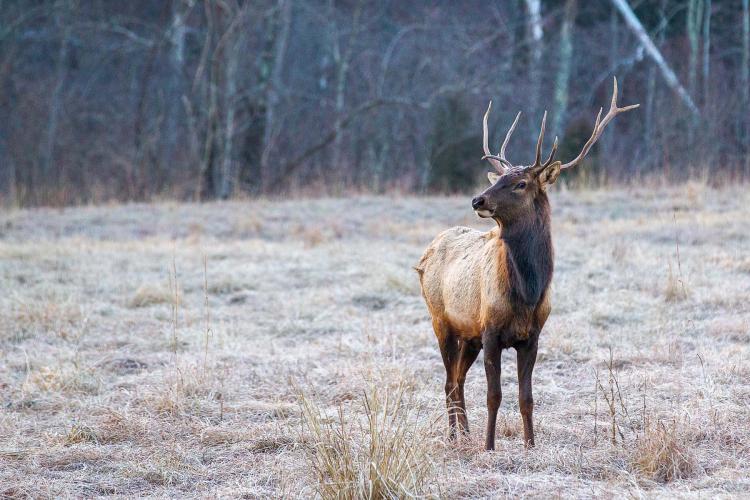






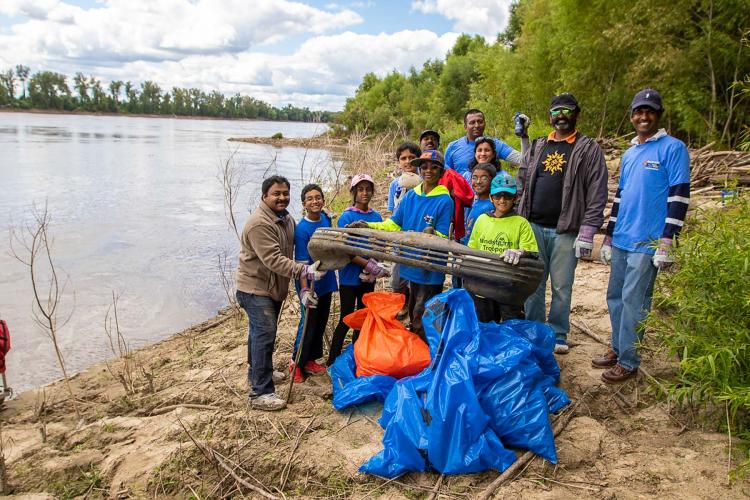



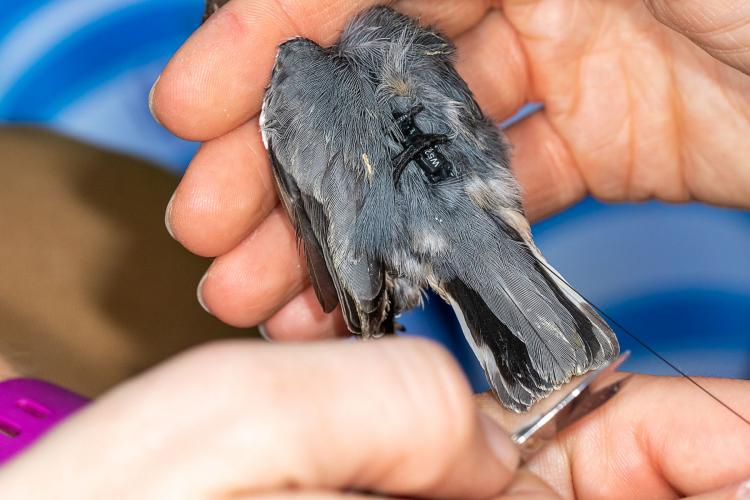



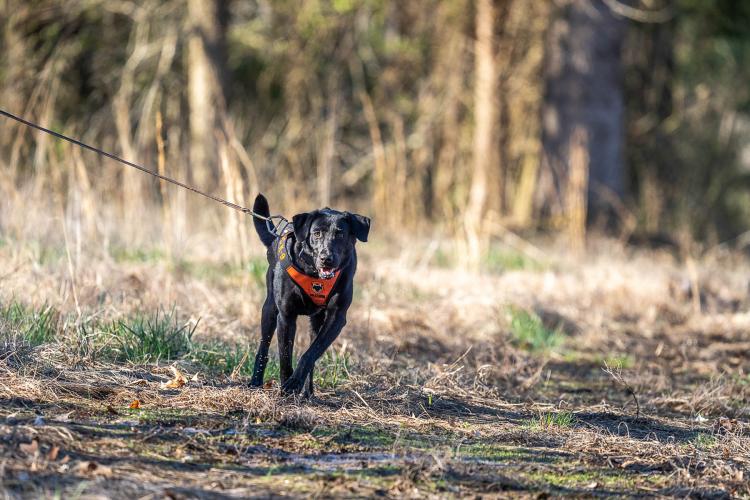

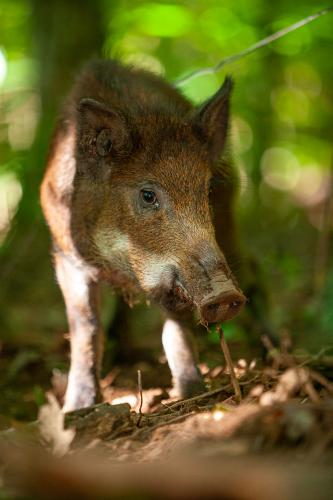

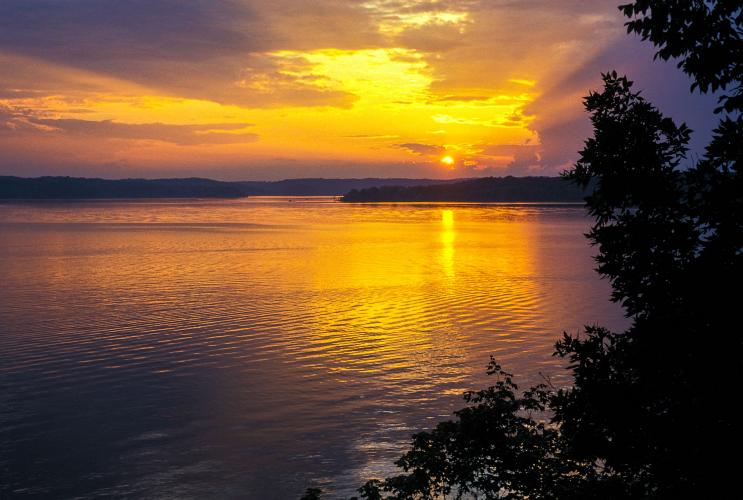
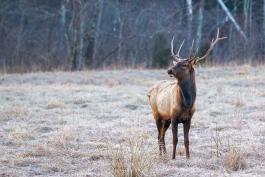


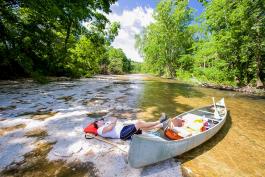
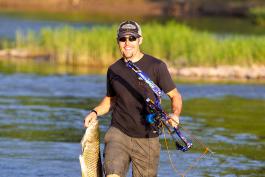




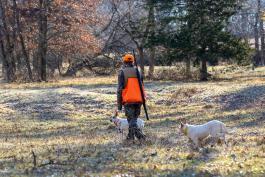


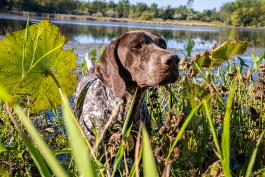

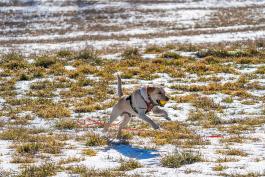





Also In This Issue
And More...
This Issue's Staff
Stephanie Thurber
EDITOR
Angie Daly Morfeld
ASSOCIATE EDITOR
Larry Archer
PHOTOGRAPHY EDITOR
Cliff White
STAFF WRITERS
Kristie Hilgedick
Joe Jerek
Dianne Van Dien
DESIGNERS
Shawn Carey
Marci Porter
PHOTOGRAPHERS
Noppadol Paothong
David Stonner
CIRCULATION MANAGER
Laura Scheuler






















